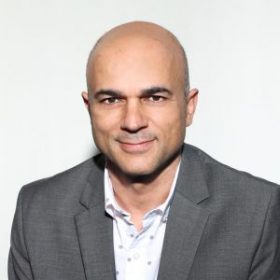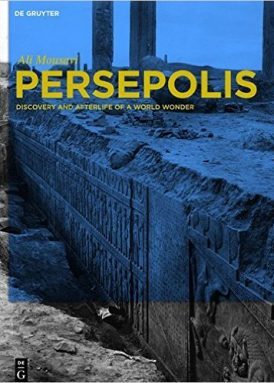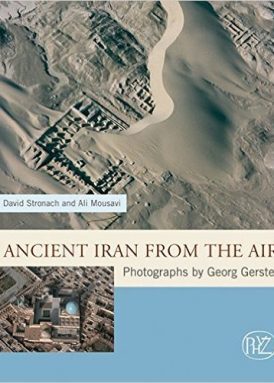Ali Mousavi

Adjunct Assistant Professor; Director, Archaeological Gazetteer of Iran
Fields of Interest: Iranian Archaeology
Education
- PhD, Near Eastern Studies (Archaeology), University of California, Berkeley, 2005
- MA, Archaeology, History, and Languages of Old World Civilizations, Université Lyon II, France, 1997
- BA, Archaeology and Art History of Europe and the East Mediterranean, Université Lyon II, France, 1996
Research
Ali Mousavi studied in Lyon, France, and took his B.A. in Art History, and his M.A. in Archaeology from the University of Lyon, France. He obtained his Ph.D. in Near Eastern archaeology from the University of California, Berkeley. He excavated in France, Turkey, and Iran, and contributed to the nomination of a number of archaeological sites and monuments on the World Heritage List of UNESCO. He is the author of a book on the site of Persepolis (Persepolis: Discovery and Afterlife of a World Wonder), and co-editor of two books: Ancient Iran from the Air, and Excavating an Empire. He has published on various aspects of Iranian art and archaeology, and holds a particular interest in the archaeology of Iranian Empires, from the Achaemenids to the Sasanians, and the history of archaeology in Iran and the Near East. He worked as a curator of Ancient Near Eastern Art at the Los Angeles County Museum of Art from 2006 to 2013. He teaches art and archaeology of ancient Iran at UCLA.
Books
-

- Persepolis: Discovery and Afterlife of a World Wonder
- de Gruyter, 2012
-

- Ancient Iran from the Air
- Philipp von Zabern, 2012
Courses
- Archaeology of Iran (UCLA, Iranian 163C and C259)
- Ancient Cities of Iran: An Archaeological survey of historical cities and sites of Iran from 4000 B.C. to 1900 (UCLA, Iranian 187)
- Ancient Cities f Iran from 4000 B.C. to 1900 (Iranian 187)
Selected Publications
- Persia (Achaemenid to Sasanid Empires), c. 550 BCE–651 CE, Sir Banister Fletcher’s A History of Architecture, 21st edition, chapter 15, London, 2019.
- Archaeology and Epigraphy: reflections on some of Xerxes’ inscriptions at Persepolis,The Art of Empire in Achaemenid Persia: Festschrift in Honor of Margaret Cool Root, M. Garrison and E. Dusinberre (eds.), Leiden, forthcoming.
- Medieval Iranians and ancient monuments in Fars: a survey of the epigraphic evidence, Iranica Antiqua, vol. 52, 2019, forthcoming.
- The history of archaeological research in Iran: a brief survey, The Oxford Handbook of Ancient Iran, D. Potts (ed.), Oxford University Press, 2013, pp. 3-16.
- The Central Alborz Region in the Iron Age, in The Oxford Handbook of Ancient Iran, D. Potts (ed.), Oxford University Press, 2013, pp. 392-406.
- Pilgrimage to Pasargadae, Cyrus the Great. An Ancient Iranian King, T. Daryaee (ed.), Afshar Publishing, Santa Monica, California, 2013, pp. 28-39.
- The Sasanian Empire: An Archaeological Survey, c.220 – AD 640, (co-authored with T. Daryaee), in A Companion to the Archaeology of the Ancient Near East, D. Potts (ed.), Willey-Blackwell, 2012, chapter 57.Les hauts et les bas de l’archéologie en Iran, La Pensée de Midi, Actes du Sud, 27, 2009, pp. 137-143 (A. Mousavi – N. Nasiri-Moghaddam).Late Bronze Age in Northwestern Iran, Iran, vol. 46, 2008,.pp. 105-120.
- Qanats: an early irrigation system in West Asia, Qanats of Bam: A Multidisciplinary Approach, edited by M. Honari, A. Salamat et al., UNESCO Tehran Cluster Office, Tehran, 2006, pp. 87-97.
- Why Darius Built Persepolis?, Archaeology Odyssey, November/December 2005, pp. 22-35.
- Comments on the Early Iron Age Iran, Iranica Antiqua, vol. 40, 2005, pp. 87-99.
- Ernst Herzfeld, politics and antiquities legislation in Iran: 1900-1950, Ernst Herzfeld and the Development of Near Eastern Studies, Ann C. Gunter And Stefan Hauser eds., Leiden-Boston, 2005, pp. 445-475.
- Persepolis in Retrospect: Histories of Discovery and Archaeological Exploration at the Ruins of Ancient Parseh, Ars Orientalis, vol. 32, Ann Arbor, pp. 209-251.
- La région de Téhéran à l’aube de l’âge du Fer: reflexions et commentaires sur les nécropoles du IIe millénaire av. J –C., Iranica Antiqua, vol. 37, 2001, pp. 151-212.
- La ville de Parsa. Quelques observations sur la topographie et le système défensif de Persépolis, Iranica Antiqua, vol. 34, Festschrift David Stronach, 1999, pp. 145-155.
- Early Archaeological Adventures and Methodological Problems in Iranian Archaeology: The Evidence from Susa, Iranica Antiqua, vol. 31, 1994, pp. 1-16.
- Une brique à décor polychrome de l’Iran occidental (VIIIe-VIIe s. av. J.-C.), Studia Iranica, vol. 23, 1994, pp. 7-18.
- Tépé Horreeye, le bit akitu de Tchogha Zanbil?, Contribution à l’histoire de l’Iran. Mélanges offerts à Jean Perrot, edited by F. Vallat, Paris, 1990, pp. 143-145.
- Some Recently Found Column Bases from Central Western Iran, Iranica Antiqua, vol. 25, pp. 165-172.
- Two Bronze Statuettes from Tuzandejan, Khurassan, Bulletin of the Ancient Orient Museum, Tokyo, 1990, vol. 11, pp. 121-134.
- The Discovery of an Achaemenid Station at Deh-Bozan in the Assadabad Valley, Archaeologische Mitteilungen aus Iran, vol. 22, 1989, pp. 135-138.
